![]() Lecitina di soia
Lecitina di soia
Rating : 6.7
| Evaluation | N. Experts | Evaluation | N. Experts |
|---|---|---|---|
| 1 | 6 | ||
| 2 | 7 | ||
| 3 | 8 | ||
| 4 | 9 | ||
| 5 | 10 |
Pros:
Anti-cholesterolemic (1)Cons:
Specific allergy (1)26 pts from AColumn
| Sign up to vote this object, vote his reviews and to contribute to Tiiips.Evaluate | Where is this found? |
| "Soy lecithin studies" about Lecitina di soia Review Consensus 10 by Flight444 (3416 pt) | 2022-Dec-08 11:42 |
| Read the full Tiiip | (Send your comment) |
Compendium of the most significant studies with reference to properties, intake, effects.
CHOLESTEROL
Ramdath DD, Padhi EM, Sarfaraz S, Renwick S, Duncan AM. Beyond the Cholesterol-Lowering Effect of Soy Protein: A Review of the Effects of Dietary Soy and Its Constituents on Risk Factors for Cardiovascular Disease. Nutrients. 2017 Mar 24;9(4):324. doi: 10.3390/nu9040324.
Abstract. The hypocholesterolemic effect of soy is well-documented and this has led to the regulatory approval of a health claim relating soy protein to a reduced risk of cardiovascular disease (CVD). However, soybeans contain additional components, such as isoflavones, lecithins, saponins and fiber that may improve cardiovascular health through independent mechanisms. This review summarizes the evidence on the cardiovascular benefits of non-protein soy components in relation to known CVD risk factors such as hypertension, hyperglycemia, inflammation, and obesity beyond cholesterol lowering. Overall, the available evidence suggests non-protein soy constituents improve markers of cardiovascular health; however, additional carefully designed studies are required to independently elucidate these effects. Further, work is also needed to clarify the role of isoflavone-metabolizing phenotype and gut microbiota composition on biological effect.
Spilburg CA, Goldberg AC, McGill JB, Stenson WF, Racette SB, Bateman J, McPherson TB, Ostlund RE Jr. Fat-free foods supplemented with soy stanol-lecithin powder reduce cholesterol absorption and LDL cholesterol. J Am Diet Assoc. 2003 May;103(5):577-81. doi: 10.1053/jada.2003.50110.
Abstract. Objective: The objective of this work was to show that fat-free, lecithin-formulated soy stanols lower cholesterol absorption and serum LDL cholesterol. Design: Reduction in cholesterol absorption was measured in paired single-meal tests with or without formulated soy stanols (acute test), and changes in serum lipids were investigated in a 10-week, randomized, double-blind parallel trial in which formulated stanols or lecithin vehicle were given three times daily for the last 4 weeks (chronic test).....Results: Stanol-lecithin reduced cholesterol absorption by 32.1% (P=.0045, n=10) and by 38.2% (P=.0022, n=11) when delivered in a lemonade-flavored beverage and in egg whites, respectively. Reduction in cholesterol absorption was strongly related to the initial level of absorbed cholesterol tracer in serum (r(s)=-0.739). Stanol-lecithin given in a beverage reduced total serum cholesterol by 10.1% (P=.0019, n=24) and LDL cholesterol by 14.3% (P=.0016, n=24).
Wilson TA, Meservey CM, Nicolosi RJ. Soy lecithin reduces plasma lipoprotein cholesterol and early atherogenesis in hypercholesterolemic monkeys and hamsters: beyond linoleate. Atherosclerosis. 1998 Sep;140(1):147-53. doi: 10.1016/s0021-9150(98)00132-4.
Abstract. The current study was designed to investigate the hypocholesterolemic and anti-atherogenic properties of soy lecithin beyond its fatty acid content. In experiment 1, 18 cynomolgus monkeys were divided into three groups of six and fed diets which approximated either the average American diet (AAD), the American Heart Association (AHA) Step I diet, or a modified AHA (mAHA) Step I diet containing 3.4% soy lecithin for 8 weeks. Plasma samples were collected from food-deprived monkeys and analyzed for total cholesterol (TC), high-density lipoprotein cholesterol (HDL-C), very low- and low-density lipoprotein cholesterol (non-HDL-C), and triglyceride (TG) concentrations. Group comparisons revealed that monkeys fed the mAHA Step 1 diet had significantly lower plasma TC (-46%) and non-HDL-C (-55%) levels compared to the AAD diet, whereas monkeys fed the AHA Step 1 diet had lesser reductions in plasma TC (-21%) and non-HDL-C (-18%) levels. The monkeys fed the mAHA Step I diet had significantly lower plasma TC (-32%) and non-HDL-C (-45%) compared to the monkeys fed the AHA step diet. Also, only the mAHA Step I diet significantly reduced pre-treatment plasma TC and non-HDL-C levels by - 39 and -51% respectively with no significant effect on plasma HDL-C or TG levels. In experiment 2, 45 hamsters were divided into three groups of 15 and fed the following three modified non-purified diets for 8 weeks: a hypercholesterolemic diet (HCD) containing 10%, coconut oil and 0.05%, cholesterol, HCD plus 3.4%, soy lecithin (+SL), or the HCD with added levels of linoleate and choline equivalent to the +SL diet but no lecithin (-SL). Plasma lipids were determined as in experiment 1 and aortas were perfusion-fixed and Oil Red O stained for morphometric analyses of fatty streak area. Relative to the HCD group, the +SL-treated hamsters had significantly lower plasma TC (-58%), non-HDL-C (-73%) and aortic fatty streak area (-90%). Relative to the -SL group, hamsters fed the +SL diet had significantly lower plasma TC (-33%), non-HDL-C (-50%) and significantly reduced aortic fatty streak area (-79%). In conclusion, the first experiment suggests that the cholesterol-lowering efficacy of the AHA Step I diet can be enhanced with the addition of soy lecithin without reducing plasma HDL-C levels. whereas the second experiment suggest that the hypocholesterolemic, and in particular, the anti-atherogenic properties of soy lecithin cannot be attributed solely to its linoleate content.
BRAIN
Moré MI, Freitas U, Rutenberg D. Positive effects of soy lecithin-derived phosphatidylserine plus phosphatidic acid on memory, cognition, daily functioning, and mood in elderly patients with Alzheimer's disease and dementia. Adv Ther. 2014 Dec;31(12):1247-62. doi: 10.1007/s12325-014-0165-1.
Abstract. Introduction: We report previously unpublished, early pilot studies performed with a brain-health food supplement containing a proprietary blend of 100 mg phosphatidylserine (PS) and 80 mg phosphatidic acid (PA) produced from soy lecithin.....Conclusion: PS is efficiently absorbed after oral consumption. A positive influence of PS+PA on memory, mood, and cognition was demonstrated among elderly test subjects. Short-term supplementation with PS+PA in patients with AD showed a stabilizing effect on daily functioning, emotional state and self-reported general condition. The data encourage long-term studies with PS+PA in AD patients and other elderly with memory or cognition problems.
Bell JM, Whitmore WL, Cowdery T, Slotkin TA. Perinatal dietary supplementation with a soy lecithin preparation: effects on development of central catecholaminergic neurotransmitter systems. Brain Res Bull. 1986 Aug;17(2):189-95. doi: 10.1016/0361-9230(86)90115-2.
Abstract. Previous work has shown that exposure of developing rats to soy lecithin preparations (SLP) influences macromolecular constituents of immature brain cells and causes abnormal behavioral patterns. To determine if synaptic mechanisms are adversely affected by SLP, we examined the developmental characteristics of noradrenergic and dopaminergic pathways in discrete brain regions. Although transmitter levels were unaffected, the utilization rates of both catecholamines were profoundly disturbed in an age-dependent, regionally-selective manner. Utilization tended to be subnormal in the preweanling stage, but demonstrated a postweaning elevation in cerebellum and midbrain + brainstem. Enhanced utilization persisted in the latter region only, and cerebral cortex actually showed a lowered utilization rate in adulthood (60 days of age). Transmitter uptake capabilities were also affected by developmental exposure to SLP, as was tyrosine hydroxylase activity. The patterns of effects on these two variables indicated that the altered transmitter utilization rate probably reflected a change in impulse activity in the affected neuron populations, with promotion of activity in the midbrain + brainstem and reduced activity in the cerebral cortex. These data indicate that dietary supplementation with SLP throughout perinatal development alters synaptic characteristics in a manner consistent with disturbances in neural function.
Bell JM, Whitmore WL, Barnes G, Seidler FJ, Slotkin TA. Perinatal dietary exposure to soy lecithin: altered sensitivity to central cholinergic stimulation. Int J Dev Neurosci. 1986;4(6):497-501. doi: 10.1016/0736-5748(86)90001-8.
Abstract. The effects of perinatal exposure to soy lecithin preparation (SLP) on the development of cholinergic responses in the rat brain were examined by assessing the ability of intracisternally administered carbachol to stimulate 33Pi incorporation into phospholipids in vivo, an effect of carbachol mediated by muscarinic cholinergic receptors. Maternal intake of SLP produced a suppression of the cholinergic response in the offspring, an effect which was specific in that basal (unstimulated) incorporation rates were not reduced (in fact, they eventually became elevated), nor was the response to another neurotransmitter (dopamine) compromised. The effect occurred early in the preweanling stage, a period in which SLP exposure also enhances development of cholinergic nerve terminals. These results suggest that SLP exposure has a major effect on cholinergic synaptic development and reactivity, followed by secondary changes in other neurotransmitter pathways and by more generalized effects on basal membrane phospholipid turnover.
ALLERGY
Gholmie Y, Lozinsky AC, Godwin H, Reeve K, Dzubiak R, Shah N, Meyer R. Tolerance of soya lecithin in children with non-immunoglobulin E-mediated soya allergy: a randomised, double-blind, cross-over trial. J Hum Nutr Diet. 2020 Apr;33(2):232-240. doi: 10.1111/jhn.12708.
Abstract. Background: Soya lecithin is present in a wide variety of foods regularly consumed by children, in the form of an emulsifier or stabiliser. Children with non-immunoglobulin (Ig)E-mediated allergies who commonly have to avoid milk and soya will have a significantly restrictive diet with reduced alternative foods if soya lecithin also has to be eliminated. The present study aimed to establish whether children with non-IgE-mediated gastrointestinal soya allergy react to soya lecithin in food products.....Conclusions: One child with a non-IgE-mediated gastrointestinal allergy had a slight reaction to soya lecithin. Although single cases may react to soya lecithin, we suggest that soya lecithin should be included in children with this delayed allergy, unless they have a confirmed reaction to traces of soya within this emulsifier. © 2019 The British Dietetic Association Ltd.
Mittag D, Vieths S, Vogel L, Becker WM, Rihs HP, Helbling A, Wüthrich B, Ballmer-Weber BK. Soybean allergy in patients allergic to birch pollen: clinical investigation and molecular characterization of allergens. J Allergy Clin Immunol. 2004 Jan;113(1):148-54. doi: 10.1016/j.jaci.2003.09.030.
Abstract. Background: Allergic reactions to legumes are generally thought to be acquired by means of primary sensitization through the gastrointestinal tract. Recently, Gly m 4 (starvation-associated message 22), a Bet v 1-related pathogenesis-related protein 10 from soy, was suggested to be an allergen in patients with allergic reactions to a dietary product containing a soy protein isolate. Objective: We sought to evaluate the clinical relevance of Gly m 4 in subjects allergic to birch pollen with soy allergy and to assess the risk for subjects allergic to birch pollen to acquire soy allergy....Conclusions: Our results confirm that soybean is another birch pollen-related allergenic food. Gly m 4 is the major soy allergen for patients allergic to birch pollen with soy allergy. The content of Gly m 4 in soy food products strongly depends on the degree of food processing.
| Sign up to vote this object, vote his reviews and to contribute to Tiiips.EvaluateClose | (0 comments) |
| "Descrizione" about Lecitina di soia Review Consensus 26 by AColumn (9336 pt) | 2024-Sep-23 16:59 |
| Read the full Tiiip | (Send your comment) |
Soy lecithin refers to a mixture of phospholipids derived from the processing of soybeans. The name "soy lecithin" provides information about the source and nature of the compound:
- "Soy" refers to the source of lecithin, which is soy. Soybeans are a type of legume native to East Asia and are widely cultivated for their edible seed, which has numerous uses.
- "lecithin" is a generic term that describes any group of yellowish-brownish fatty substances present in animal and plant tissues. Lecithins are amphiphilic, meaning that they attract both water and fat and are used to smooth food textures, dissolve powders, homogenize liquid mixtures and repel sticky materials.
Thus, soy lecithin is a complex mixture of phospholipids, glycolipids, triglycerides and other compounds, which is extracted from soybeans.
Soy lecithin is composed of
- water
- carbohydrates
- triglycerides
- phospholipids
- glycolipids
- traces of sterols
- fatty acids
- carotenoids
The synthesis process takes place in different steps:
- Soybean oil extraction. The first step is to extract the oil from soybeans. This is typically done with a solvent such as hexane. Soybeans are cleaned, cracked and then rolled into flakes. The flakes are then immersed in the solvent, which dissolves the soybean oil. The solvent is then removed, leaving the crude soybean oil behind.
- Degumming. Crude soybean oil contains a variety of impurities, including phospholipids, which make up lecithin. The oil is heated and mixed with water or steam, which causes the phospholipids to hydrate and form a gum. This rubber is then separated from the oil.
- Drying and further processing. Wet rubber contains lecithin, but also contains water and other impurities, so it is dried to remove water and can also be bleached or deodorized to remove any remaining impurities or odors. The result is a dry, dusty substance that is mainly lecithin.
- Optional modification. Depending on the desired final product, lecithin may undergo further modification. For example, it can be fractionated to separate different types of phospholipids, or it can be hydrolyzed to change its emulsifying properties.

It appears in the form of a yellowish powder.
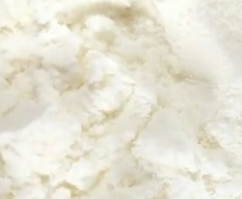
What it is used for and where
Soy lecithin is commonly used as an emulsifier in a wide range of foods and also has applications in the pharmaceutical and cosmetic industries.
Food
Soy lecithin is a food additive with the function of an emulsifying and stabilising agent, listed as E322 on the European food additives list.
Its food applications are varied: from chocolate to sweets from the bakery to generic foods.

Here is a list of the main applications:
- Instant or powdered beverages
- Soups, sauces
- Cheeses
- Meat and stuffed products
- Ground Meat Products and Fillings
Because of this wide availability, soy lecithin can be used as a substitute for rapeseed lecithin and sunflower lecithin.
Medical
Soy Lecithin has many healthy uses in the food and medical sectors.
In the food sector it is an emulsifier.
In medicine it has been found to be beneficial for human health:
- hypolipidemic
- liver function support
- control of blood levels of cholesterol and triglycerides (1)
- reduction of harmful LDL cholesterol (2)
- memory improvement (animal experiment) (3)
Cosmetics
- Antistatic agent. Static electricity build-up has a direct influence on products and causes electrostatic adsorption. The antistatic ingredient reduces static build-up and surface resistivity on the surface of the skin and hair.
- Skin conditioning agent. It is the mainstay of topical skin treatment as it has the function of restoring, increasing or improving skin tolerance to external factors, including melanocyte tolerance. The most important function of the conditioning agent is to prevent skin dehydration, but the subject is rather complex and involves emollients and humectants that can be added in the formulation.
- Skin conditioning agent - Emollient. Emollients have the characteristic of enhancing the skin barrier through a source of exogenous lipids that adhere to the skin, improving barrier properties by filling gaps in intercorneocyte clusters to improve hydration while protecting against inflammation. In practice, they have the ability to create a barrier that prevents transepidermal water loss. Emollients are described as degreasing or refreshing additives that improve the lipid content of the upper layers of the skin by preventing degreasing and drying of the skin. The problem with emollients is that many have a strong lipophilic character and are identified as occlusive ingredients; they are oily and fatty materials that remain on the skin surface and reduce transepidermal water loss. In cosmetics, emollients and moisturisers are often considered synonymous with humectants and occlusives.
- Surfactant - Emulsifying agent. Emulsions are thermodynamically unstable and are used to soothe or soften the skin and emulsify, so they need a specific, stabilising ingredient. This ingredient forms a film, lowers the surface tension and makes two immiscible liquids miscible. A very important factor affecting the stability of the emulsion is the amount of the emulsifying agent. Emulsifiers have the property of reducing the oil/water or water/oil interfacial tension, improving the stability of the emulsion and also directly influencing the stability, sensory properties and surface tension of sunscreens by modulating the filmometric performance.
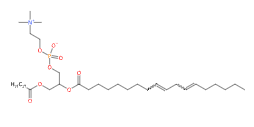 | 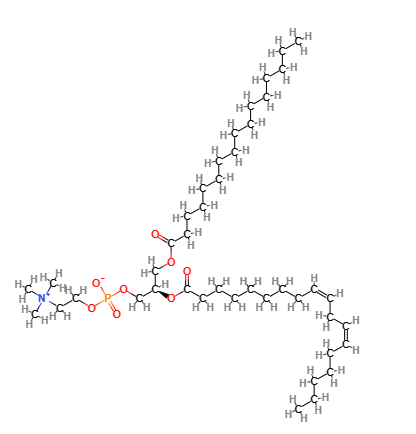 |
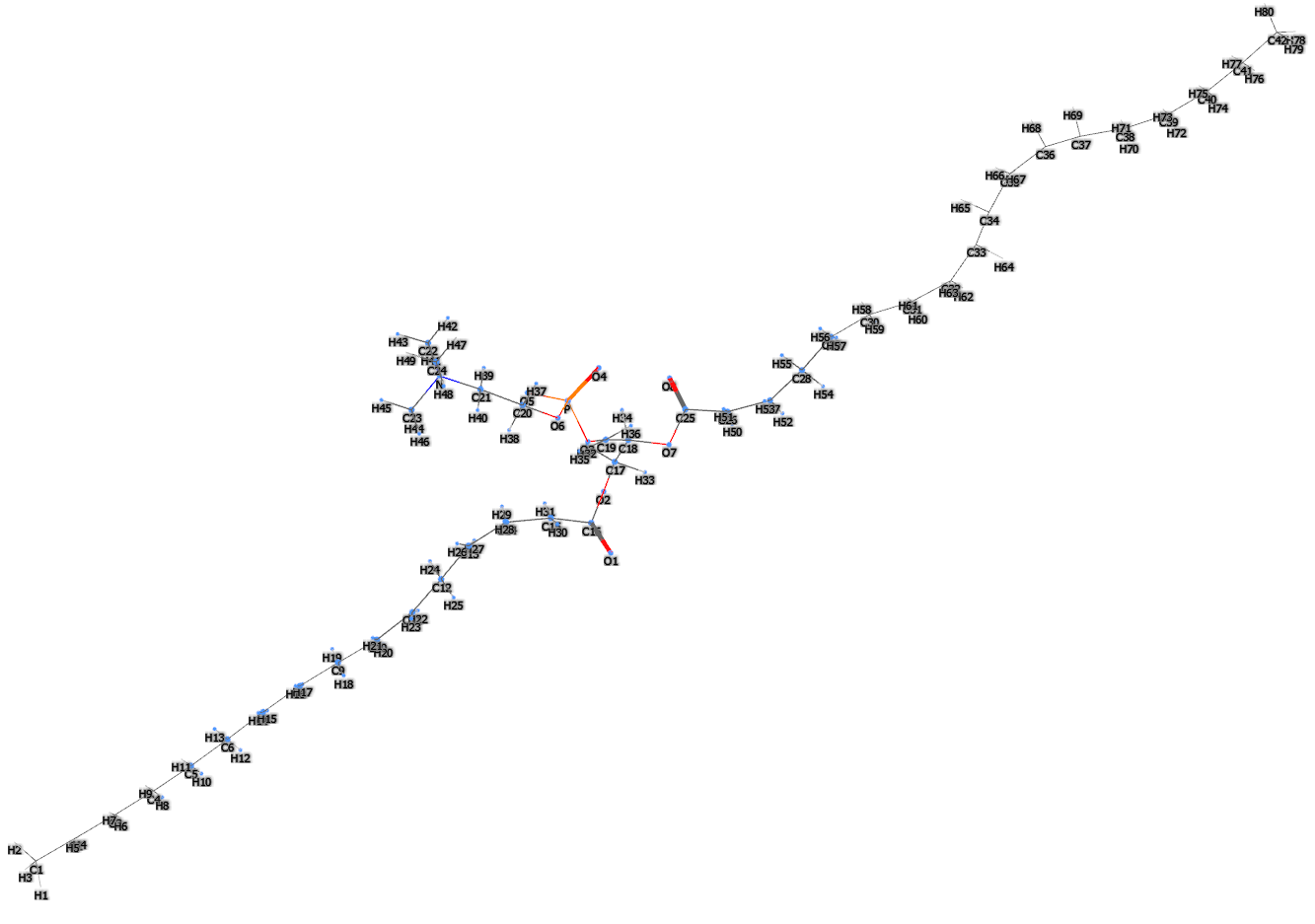 | 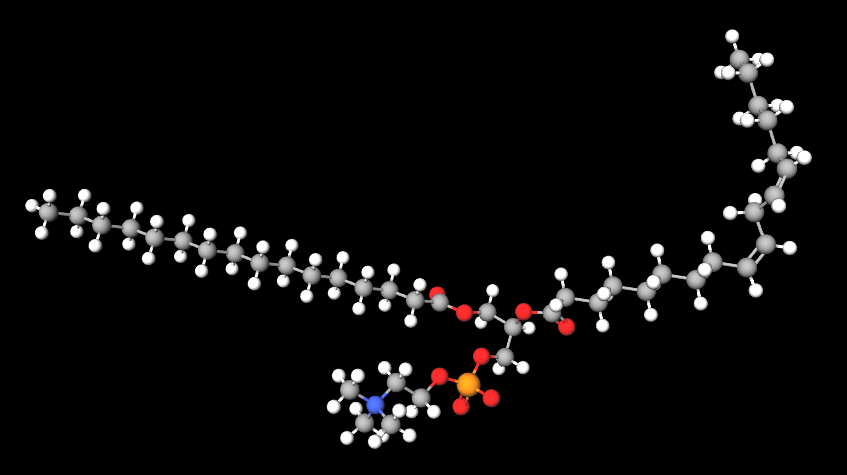 |
- Molecular Formula C42H80NO8P
- Molecular Weight 758.1 g/mol
- CAS 8002-43-5
- UNII 6UCA7I41S8
- EC Number 232-307-2
The most relevant studies on this ingredient have been selected with a summary of their contents:
References________________________________________________________________________
(1) Ipatova OM, Prozorovskaia NN, Torkhovskaia TI, Baranova VS, Guseva DA. Biologicheskaia aktivnost' soevykh fosfolipidov [Biological effects of the soybean phospholipids]. Biomed Khim. 2004 Sep-Oct;50(5):436-50. Russian.
Abstract. Soyabean phospholipids, particularly commercial lecithin, are now widely used as biological active food additives. Mechanisms of their activities are based mainly on their similarity with ow phospholipids of biomembranes and blood lipoproteins. The similarity allows the inclusion of plant phospholipids into these structures and promotes prevention of number of pathological processes. Soybean phospholipids have a wide range of biochemical and physical effects. Lecithin complex is the source of easily accessible linoleic acid, choline and inositol. Lecithin plays a notable role as synergist for antioxidants also. The proven health benefits which can be achieved by taking soybean phospholipids include lipid-lowering; control of blood levels of cholesterol and triglyceride, stabilisation of the membrane functions, supporting the hepatic functions. Structure, some physico-chemical properties and metabolism of phospholipids, and molecular mechanisms of their prophylactic effects are briefly reviewed.
(2) Spilburg CA, Goldberg AC, McGill JB, Stenson WF, Racette SB, Bateman J, McPherson TB, Ostlund RE Jr. Fat-free foods supplemented with soy stanol-lecithin powder reduce cholesterol absorption and LDL cholesterol. J Am Diet Assoc. 2003 May;103(5):577-81. doi: 10.1053/jada.2003.50110.
Abstract. Objective: The objective of this work was to show that fat-free, lecithin-formulated soy stanols lower cholesterol absorption and serum LDL cholesterol.... Results: Stanol-lecithin reduced cholesterol absorption by 32.1% (P=.0045, n=10) and by 38.2% (P=.0022, n=11) when delivered in a lemonade-flavored beverage and in egg whites, respectively. Reduction in cholesterol absorption was strongly related to the initial level of absorbed cholesterol tracer in serum (r(s)=-0.739). Stanol-lecithin given in a beverage reduced total serum cholesterol by 10.1% (P=.0019, n=24) and LDL cholesterol by 14.3% (P=.0016, n=24). Applications/conclusions: Powdered soy stanol-lecithin lowers cholesterol absorption and LDL cholesterol when consumed in fat-free foods.
(3) Suzuki S, Yamatoya H, Sakai M, Kataoka A, Furushiro M, Kudo S. Oral administration of soybean lecithin transphosphatidylated phosphatidylserine improves memory impairment in aged rats. J Nutr. 2001 Nov;131(11):2951-6. doi: 10.1093/jn/131.11.2951.
Abstract. Soybean lecithin transphosphatidylated phosphatidylserine (SB-tPS) was prepared from soybean lecithin and L-serine by a transphosphatidylation reaction, and its effect on age-related memory impairment was evaluated in rats by the Morris water maze test. Continuous oral administration of SB-tPS (60 mg x kg(-1) x d(-1) for 60 d) to male aged rats (24-25 mo) significantly improved performance in the water maze escape test (P < 0.01 vs. control aged rats) similar to bovine brain cortex-derived phosphatidylserine, which restores cognitive function in patients with senile dementia. SB-tPS also increased acetylcholine release and the Na(+), K(+)-ATPase activity of the synaptosomes prepared from these aged rats to the level in young rats. The nootropic actions of SB-tPS in the present study can be partly explained by the changes in these biochemical activities.
| Sign up to vote this object, vote his reviews and to contribute to Tiiips.EvaluateClose | (0 comments) |
Read other Tiiips about this object in __Italiano (5)
Component type: Chemical Main substances:
Last update: 2023-05-14 15:37:50 | Chemical Risk: |


